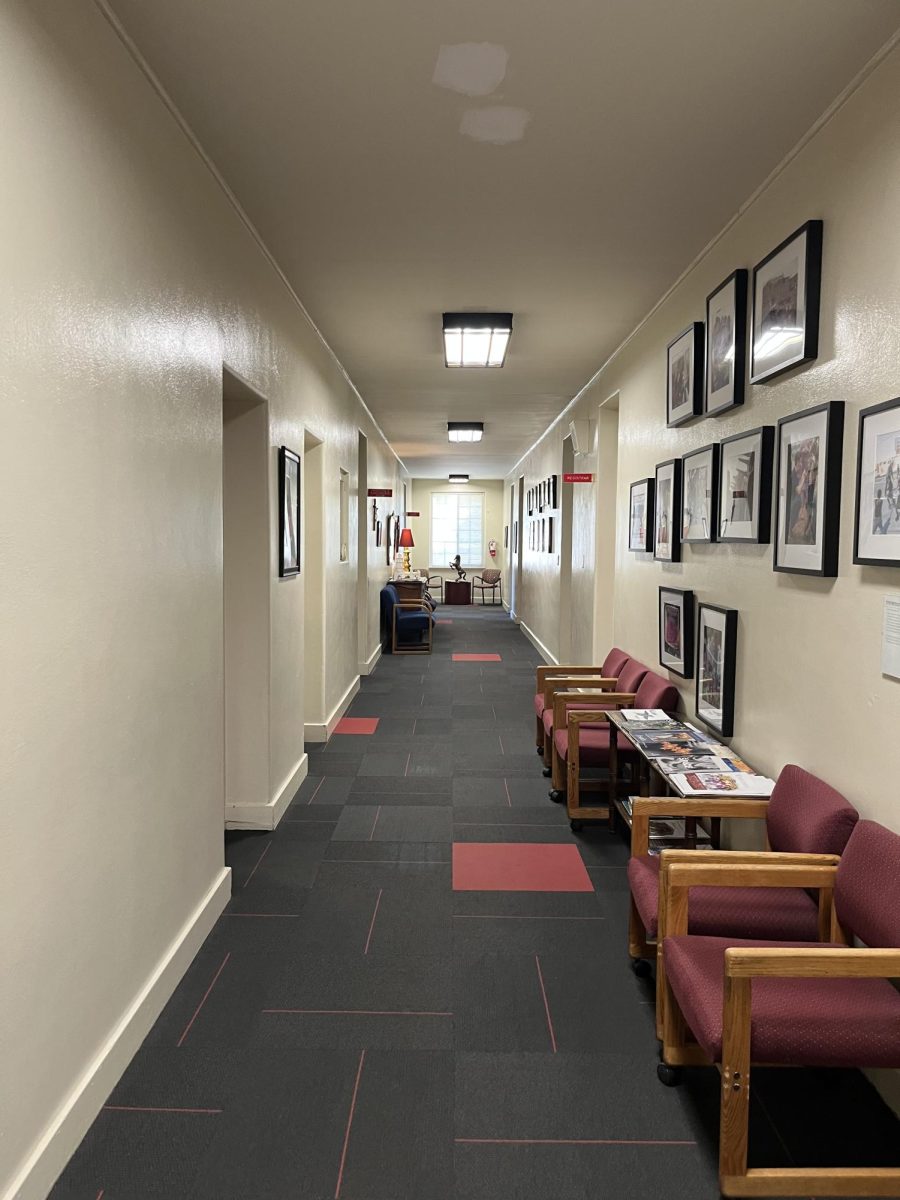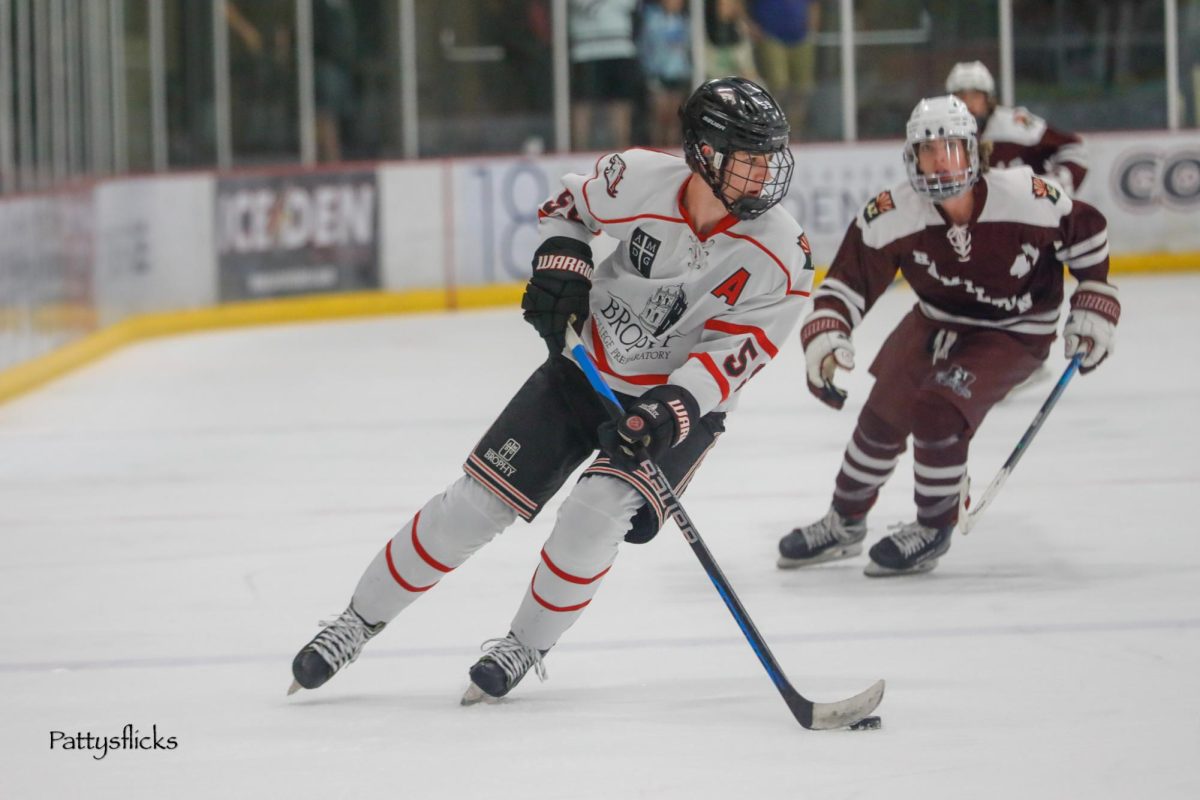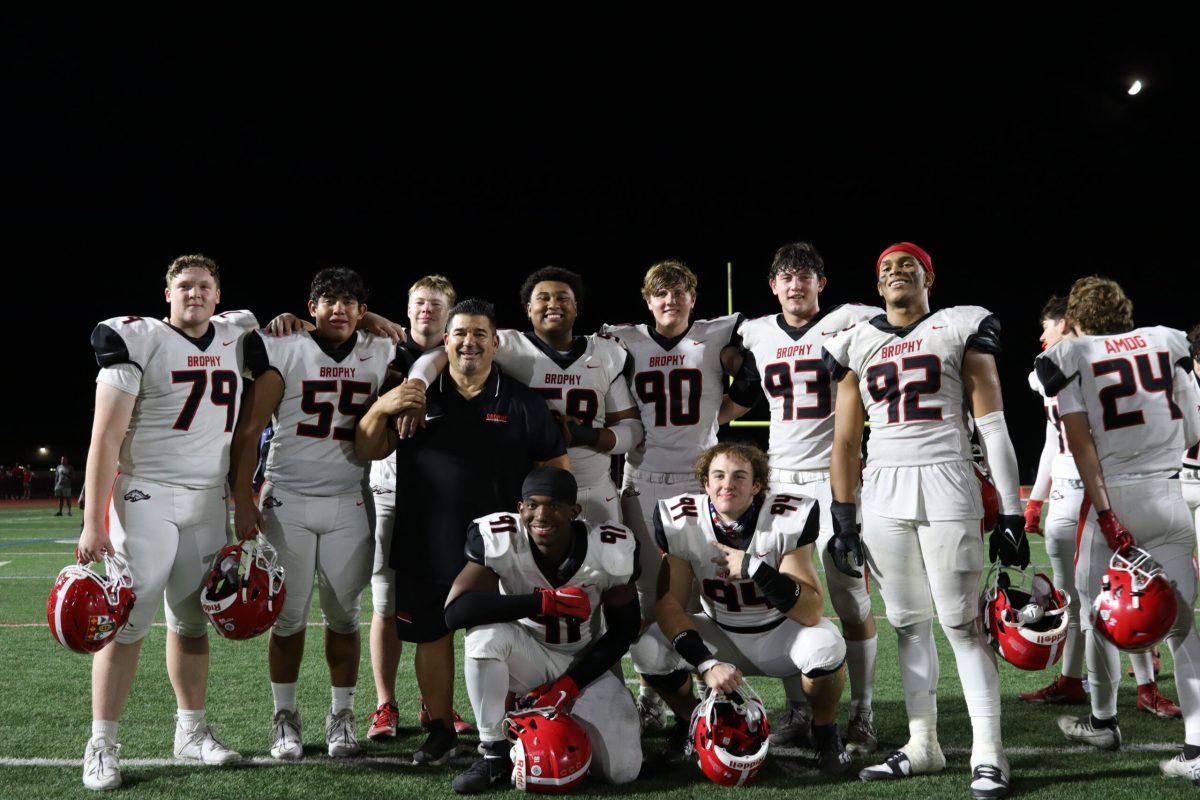THE ROUNDUP
By George Anton ’21
The moment that school shut down last March, the conversation began as to how and when athletics would be able to return.
Since then, Brophy has pieced together a three-phased approach to bring athletes back to practice and competition.
Phase one began with athletes practicing in groups less than 10, spaced out and without equipment. Phase two permits athletes to congregate in groups less than 50 and use of sanitized equipment, however, close contact is still avoided. Phase three allows teams to practice with close contact drills.
“I can say this with great confidence; we are doing it better than any school I know”
– Mr. Chris White
Mr. White said there are challenges and room for improvement, but thus far the protocols have been successful.
One varsity football player contracted COVID-19 in June (his identity has remained anonymous for privacy concerns). Once his symptoms started, he was immediately taken out of practice and all football players were notified of the incident. No other players contracted the virus.
Brophy athletics entered into phase three on Sep. 17 when the Arizona Interscholastic Association (AIA) and their Sports Medicine Advisory Committee (SMAC) deemed it safe to play contact sports.
With the recommendations from health professionals, Brophy will play its first game as scheduled on Oct. 2 against Notre Dame Prep.
Before phase three began, when there was no guarantee the football players would be able to play games, they still had faith that things would turn around for them.
“I think we all have the hope that we are going to play games and that’s the reason we still get out of bed every morning,” said varsity football player Hayden Horn ’22 on Sep. 15. “As taxing as it is, we’re out there because we love [football] and we have faith that we will have games.”
Horn said that although the team does not have much time to practice without restrictions, he has full faith that the coaching staff and leadership will have the team ready by their first game.
“Every school has been disadvantaged by this so Brophy is not falling way behind,” Horn said.
Brophy’s athletic safety protocols have been composed of medical suggestions from multiple state and federal studies, as well as the recommendations that the AIA is adhering to.
On Aug. 27 the SMAC created its first set of guidelines for return to athletic activity that the AIA agreed to follow.
The guidelines had three metrics that must be met in order to return to close-contact sports. Hospitalization for COVID-like illness must be below 5%, the positivity testing rate must be below 5% and there must be less than 10 cases per 100,000 population in a school’s community.
All benchmarks had been previously met except for the third one. Brophy was unable to practice in close contact until Sep. 17 when the SMAC revised the third metric, changing the number from 10 cases per 100,000 to 75.
As of the morning of Sep. 18, Brophy football has proceeded into phase three and is now including close contact drills in practices.
An original dilemma was that the AIA announced the football schedule before they had been consulted by the SMAC. Chances looked slim that cases would drop to 10 by early October, and football teams would not be able to play games.
While the fate of the football team’s season was uncertain, other Brophy sports teams have not felt the ramifications of social distancing nearly as much.
“By and large, I would say that cross-country is able to operate in much the same way that we would have in years past,” said cross-country Head Coach Mr. Oscar Borboa.
The cross-country team has already begun competition due to it being a naturally distant sport that does not require close contact.
Mr. Borboa said that there are changes to the team’s practices and meets, but overall social distancing protocol has had no major impact on their season.
“To me one of the biggest differences are the simple things like high-fiving a teammate after a great repetition, how you might greet someone when you get to practice and the celebrations that are really common in our sport,” Mr. Borboa said.
He did note that he and the rest of the team consider themselves really lucky for having the opportunity to compete this season despite the coronavirus. Many other states such as California have pushed back their cross-country season all the way to at least January of 2021.
With Brophy now in phase three for athletics, another sense of normalcy returns to the campus as the school slowly adjusts to operating amid COVID-19.













